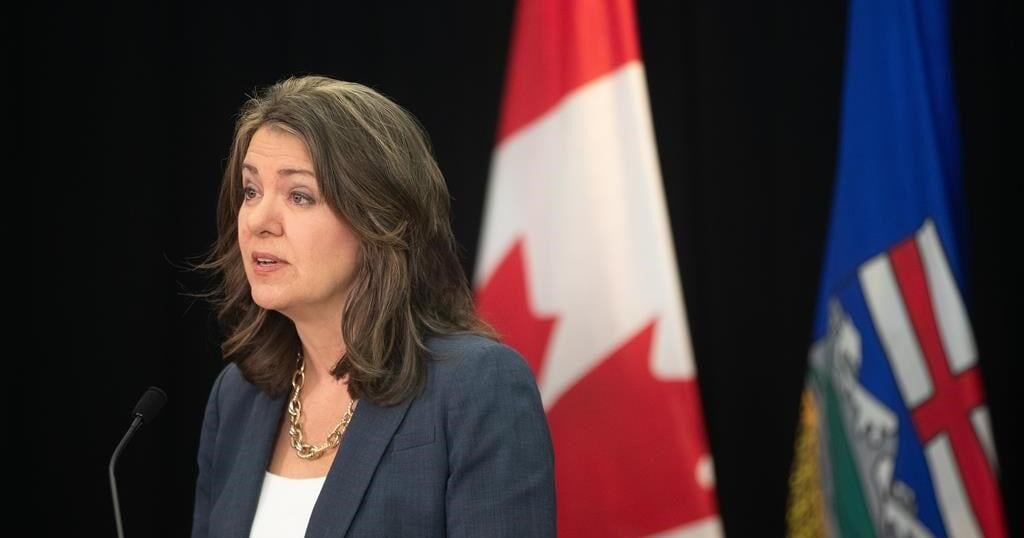RED DEER, Alta. – Alberta municipal leaders are calling for the provincial government to reverse its ban on vote counting machines, saying it’s more costly and time-consuming to count by hand.
However, Premier Danielle Smith told reporters at the Alberta Municipalities convention in Red Deer on Thursday that electronic tabulators have failed to produce faster results and confidence in them.
“We’re going to go back to doing things the old-fashioned way, and we’ll see how it works,” said Smith.
The premier said the province has asked municipalities for a tally of the costs so it can help cover them, and estimated about 30 municipalities use tabulators.
Last year, members of Smith’s United Conservative Party voted overwhelmingly to ban ballot-counting machines in provincial elections, citing security concerns.
But a Thursday resolution from the City of St. Albert calling for the government to change course passed in an 85.8 per cent vote.
“We’re not always going to agree with the municipalities,” said Smith, adding they are creatures of the provincial government.
“As a provincial government, we have heard that people want to go back to paper ballots,” she said.
St. Albert Mayor Cathy Heron told The Canadian Press she’s not hearing any demands from residents concerned about vote tabulators.
“I think (United Conservatives) feel like they have to honour a couple of (party resolutions) just to keep their base happy, and they chose this one because it doesn’t hurt them — but it does hurt us,” she said.
The prohibition came as part of a bill passed in the spring that will also allow political parties to run on municipal ballots in Edmonton and Calgary, and give Smith’s cabinet the power to repeal some municipal bylaws and fire councillors if it deems it to be “in the public interest.”
Edmonton has estimated it will cost $2.6 million to revert to hand-counting, a cost Mayor Amarjeet Sohi said will need to be paid by municipal property owners.
“That is not fair to them,” he said.
Sohi said the city has used electronic tabulators for two decades with no problems.
Red Deer has estimated it will cost more than three times the amount of past elections to hire extra staff.
Calgary Mayor Jyoti Gondek said it appears it could cost at least $1.3 million to implement the province’s new rules for the next municipal election in 2025.
“There is a lot of mythology out there around tabulators, but the actual science tells you that they are more reliable, more certain, and predictable than doing hand counts,” Gondek told reporters.
Alberta NDP Leader Naheed Nenshi said if the province wants to force hand-counting, it should pay for it.
Nenshi said it will also take much longer to actually get the results on election night.
“(Smith’s) listening to conspiracy theorists from the U.S. who think that somehow vote tabulators can be hacked,” he said. “Here’s the thing: the vote tabulators are not connected to a network — all they do is count.”
This report by The Canadian Press was first published Sept. 26, 2024.
